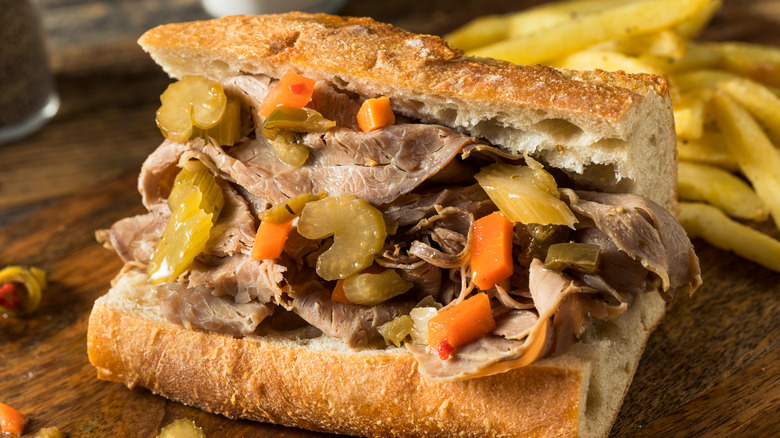In the summer time join us on our patio for outdoor seating. Gordy’s Steak House was established in November 2005, in the building formerly bear steak as the Shore Club in Willernie MN.
Willernie is a charming postage-stamp size town next to Mahtomedi and White Bear Lake. The Shore Club had been doing business since the 50’s, in the time when Mahtomedi and Willernie were resort communities and people traveled by Street Cars from St. Paul to the White Bear Lake areas. Now more than a half century later our mission at Gordy’s is to continue the tradition of the small town supper club while providing our guests with a comfortable upscale dinning experience. If you just finished watching FX’s “The Bear,” you might have found yourself dealing with some strong cravings. For some people, those cravings are for actor Jeremy Allen White’s lead character Carmy. Much like the city’s popular deep dish pizzas and veggie-loaded hot dogs, there’s a lot to know and love about this popular Chicago sandwich.
One of the key qualities that makes the Italian beef sandwich unique is the type of meat that is used. According to NPR, the sandwich was invented by Italian immigrants in the early part of the 20th century. This left the meat a tender, shredded cut of delicate beef. It also got more flavor from the addition of Italian seasoning added to the slow simmering beef. Country Living editors select each product featured. If you buy from a link, we may earn a commission. There are so many cuts to choose from!

Whether it’s broiled or fried, sautéed or roasted, or you have a great grilling recipe, beef has long been a favorite on American plates, and that goes doubly for steak. Generally, steak comes from three areas on the steer and is sliced across the muscle. There are so many cuts, it might seem like you need to be a butcher to figure it all out, but really all you need is a good guide, like the following. Find 15 different types of steak and cuts right here. This leaves the beef with cube-shaped marks, leading to its name and an appearance somewhat resembling ground beef.
Typically a top sirloin, cube is great for chicken-fried and Swiss steaks, and can be pan fried, braised or even sautéed. Although it’s only been around in the U. Denver steak is becoming a very popular piece of beef. The fourth-most tender cut of cattle muscle, it comes from the eye of chuck, located along the front shoulder. While most flesh from this section is tough enough, it’s primarily used for ground beef or stew meat, and Denver steak is culled from the part of the muscle that doesn’t get much exercise. This steak is tender enough that it almost melts in your mouth, so it’s no surprise that it’s the most expensive cut of beef.
French, comes from the tenderloin, a long, cylindrical muscle along the spine of the steer that doesn’t bear much weight. Chateaubriand and beef Wellington also come from the tenderloin. Because it’s so low in fat, filets will dry out if overcooked. A wonderfully tasty cut of beef, flank steak comes courtesy of the rear lower abdominal area, or the flank. It’s lean and fibrous, which means this hard-working, flat muscle should be tenderized with marinade, and cooked fast, at a high temperature, not past medium. It’s also possible to braise flank, but however you cook it, make sure you slice it against the grain to prevent serving up chewy bits. Flank is sometimes sold as London broil.
Coarse-grained, it holds the seasoning beautifully, and is similar enough to flank steak and skirt steak that it can replace them in recipes. Grill flap steak over high heat to medium—it really is best this way—and slice it thinly, against the grain. Less expensive than a filet or strip, but more tender than other low-priced steak, the flat iron is a chuck cut sliced from the shoulder of the steer. While most chuck is tough, flat iron comes from the top blade muscle, which doesn’t have the same connective tissue.
Grill a flat iron—so dubbed for its triangular shape—or cook it in a hot pan to about medium-rare. Favored by butchers and restaurants, hanger steak gets its name from how it’s positioned in the cow: hanging between the rib and the loin, supporting the diaphragm. With an intense beef flavor, this member of the flat steak family, which also includes flank and skirt, fares best with an acidic marinade, made with wine, vinegar, or citrus juice. For best results, cook it on a high heat not past medium, and slice it against the grain. London broil is less a steak than a cooking method, but supermarkets often sell it by name as a cut of beef, so it gets an inclusion on this list.
The meat itself is sometimes skirt steak—but usually top round, which is lean and therefore tougher—making it far less expensive than steaks like filet mignon. Sliced from the center of the rib section and sold bone-in or boneless, this is one of the most juicy, flavorful cuts of steak, thanks to its marbling. Slightly chewier than tenderloin, it should be cooked over a dry, high heat, with minimal seasoning—even salt and pepper will do—to emphasize the delicious, beefy taste. This super-lean cut of beef comes fromyes, you guessed it: the steer’s hindquarters. Also called round steak, or even the less-appealing butt steak, rump steak is cheaper than many other steaks because it’s among the least tender.
